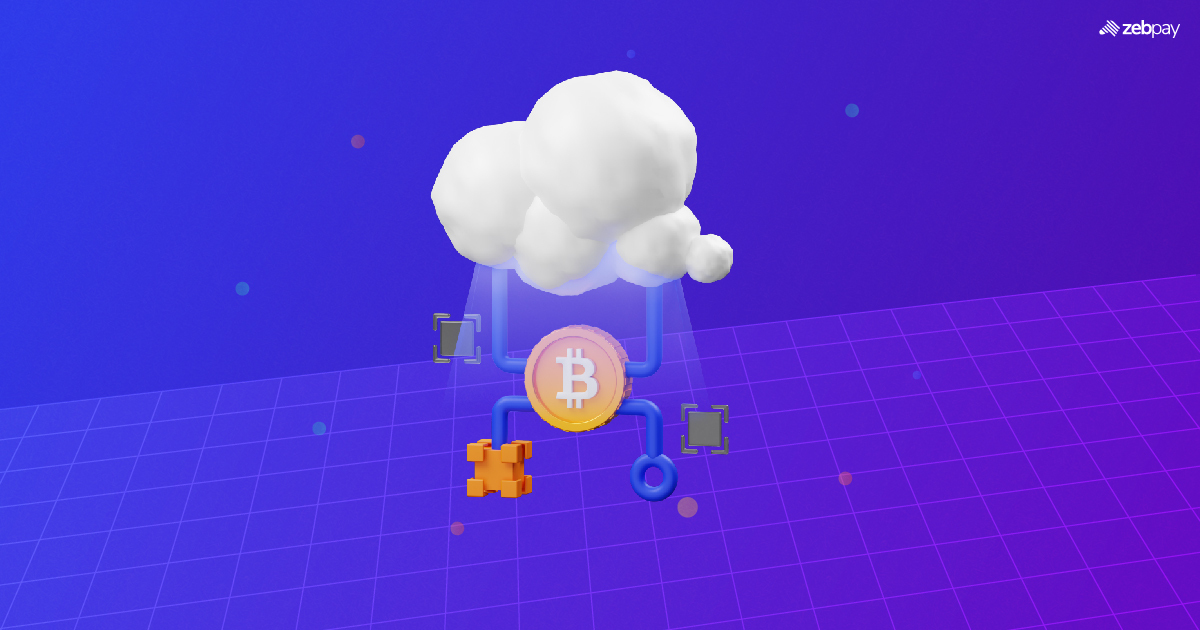The metaverse functions as a virtual realm where users can engage in work, interaction, and connection beyond the constraints of the real world. With its distinctive features, this technology aims to construct an ecosystem that blurs the boundary between reality and the virtual. Employing blockchain technology, virtual reality (VR), and augmented reality (AR), the metaverse breathes life into a digital cluster, providing access to a 3D digital space representing a simulated physical environment. The metaverse replicates real-world scenarios, enhancing them with additional features through VR and AR. Users can utilize Metaverse wallet solutions to store their digital assets while navigating or trading within the virtual environment.
Undoubtedly, the metaverse holds significant importance and may become increasingly crucial in the future. The ability to represent oneself graphically and authentically online is appealing, and the metaverse can enable global interactions within a largely realistic virtual environment.
The impact of the metaverse spans across various sectors, reshaping the way we connect and collaborate in areas such as business, education, entertainment, and social interaction. Virtual economies within the metaverse are flourishing, with real-world industries swiftly integrating into this digital landscape. The metaverse’s growth is exponential, extending its influence beyond the digital realm and creating opportunities for innovation, connectivity, and economic expansion.
Much like the Internet revolutionized the world in the 1980s and 1990s, the metaverse has the potential to change the way society operates, if not more so. This blog will delve into the diverse types and dimensions of the metaverse.
Read more: What is Metaverse
Virtual Reality (VR) Metaverse
The virtual reality (VR) metaverse constitutes a specific dimension within the broader metaverse, distinguished by complete digital immersion. In this virtual domain, users wear VR headsets to enter fully immersive digital environments. These environments are often crafted to replicate real-world settings, fantastical landscapes, or entirely original and surreal worlds.
The incorporation of virtual reality plays a pivotal role in fortifying the foundational infrastructure of metaverse technology. As the metaverse endeavours to shift from reality to a dynamic virtual world on the Internet, VR becomes instrumental in providing essential support for this transition. Wearing a virtual reality headset is a fundamental requirement for engaging in the metaverse, serving as a basic prerequisite for entry. Moreover, robust virtual reality software is necessary to design the online space within the virtual domain. Both VR software and VR headsets are indispensable elements that facilitate the operation and creation of metaverse clusters.
Augmented Reality (AR) Metaverse
Within the expansive landscape of the metaverse, the augmented reality (AR) metaverse emerges as a captivating dimension that connects the tangible and the virtual. Augmented reality is a technological innovation that enhances our physical environment by integrating digital information, objects, and experiences. Within the Metaverse framework, AR seamlessly introduces a layer of digital elements into the real world, providing users with an engaging and harmonious experience.
Read more: Role of AR and VR in Metaverse
Mixed Reality (MR) Metaverse
In the dynamic terrain of the metaverse, a particular dimension emerges as an intriguing link between our tangible reality and the digital domain: the mixed reality (MR) metaverse. MR is a technological fusion that amalgamates the strengths of augmented reality (AR) and virtual reality (VR), crafting a vibrant, interactive space where the distinctions between the physical and the virtual become indistinct.
Social Metaverse
A metaverse centered on social interaction facilitates communication, collaboration, and connection. These virtual environments encourage users to engage in social connections, enabling them to meet new individuals and stay connected with friends and family.
An illustration of such a metaverse is ‘Second Life.’ In this virtual realm, users can generate avatars and engage with others across diverse virtual settings. The platform is intentionally crafted as a social hub, featuring a plethora of activities and events aimed at fostering social ties and community development. What sets Second Life apart is its distinctive feature that empowers users to fashion and personalize their virtual spaces, providing a sense of ownership and creative autonomy.
Gaming Metaverse
A metaverse centered on gaming is a virtual realm primarily dedicated to gaming and interactive entertainment encounters. This genre of metaverse centres on gaming mechanics, enabling users to partake in gameplay, quests, and assorted challenges while navigating through virtual landscapes.
An intriguing real-world illustration of a gaming-based metaverse is ‘Roblox.’ Roblox stands out as a multiplayer online game where users can design their games and engage with games crafted by other users. This platform has gained immense popularity due to its extensive array of user-generated content, encompassing diverse games, virtual experiences, and communal spaces. Additionally, users have the option to purchase virtual goods and other in-game items utilizing its virtual currency, known as ‘Robux.’
Enterprise Metaverse
The Business and Enterprise Metaverse represents a dynamic expansion of the broader Metaverse, specifically designed for professional and corporate utilization. It goes beyond recreational activities, aiming to revolutionize the operational, connectivity, and collaborative aspects of businesses in a digital-centric era.
This digital realm presents innovative possibilities for companies and organizations, facilitating smooth collaboration among remote teams through virtual office spaces that evoke a sense of presence and improve communication. Additionally, it opens distinctive avenues for networking, organizing trade shows, and hosting conferences, surpassing geographical limitations.
The Enterprise Metaverse is reshaping our approach to work by providing virtual environments that replicate physical offices, ushering in a transformative era in professional engagement.
Read more: Rise of the Metaverse Economy
Dimensions of Metaverse Realms
Spatial Dimension
Spatial computing represents a fusion of the real and the virtual, blurring the boundary between the tangible and the conceptual realms. Evolving into a broad technological category, spatial computing enables the exploration and modification of 3D spaces while enhancing the physical world with supplementary information and experiences. Key components of this layer include 3D engines like Unity and Unreal.
Combining augmented reality (AR), virtual reality (VR), and mixed reality (MR), spatial computing breathes life into the concept of the “metaverse.” Through spatial computing, the vision of a parallel, three-dimensional virtual universe that seamlessly interacts with reality and remains constantly accessible becomes a reality. This technology allows simultaneous real-time interaction with both the virtual and the real world.
Over time, spatial computing has become a crucial technological class, providing access to and manipulation of 3D spaces for enhanced and immersive experiences.
Economic Dimension
This is the focal point where most businesses and individuals are directing their attention. Users engage in digitally-driven environments through activities such as gaming, shopping, NFTs, e-sports, and theatre. The metaverse transcends being merely a 3D representation of reality; it aspires to be the ultimate virtualization of physical space, products, and distances. The constraints imposed by physical space will dissolve as it dematerializes.
Consequently, the metaverse is poised to provide an abundance of experiences currently beyond reach for everyone. Platforms like Decentraland and Roblox showcase various interactive live events (MILEs), illustrating how the metaverse will democratize access to these events.
The metaverse centres on delivering diverse experiences. Its significant impact and the substantial investments it attracts are attributable to the lifelike experiences it is positioned to offer. Whether in the realms of gaming, social interactions, shopping, theatre, or e-sports, a genuine metaverse has the potential to revolutionize a spectrum of human experiences with its immersive and real-time qualities.
Technological Dimension
This layer encompasses the technological framework necessary for establishing a fully operational and interconnected metaverse. The technology clusters that drive the metaverse include:
- Computational capabilities and network infrastructure, incorporating spatial positioning algorithms, edge computing, GPU servers, real-time network transmission, and virtual scene adaptation.
- Video gaming technologies utilize 3D game engines like Unreal Engine and Unity to create resources such as animations, sounds, and images.
- Display technologies, including AR, VR, MR, ER, and XR, not only deliver an immersive audiovisual experience but also tailor the experience to users’ evolving tastes and preferences over time.
- Blockchain technology, supported by decentralized value transfer mechanisms, settlement platforms, and smart contracts, ensures ownership and circulation of value. Through decentralization, an economic system characterized by transparency, efficiency, and stability will be actualized.
Ethical and Regulatory Considerations
The expansion of the metaverse has given rise to various ethical and privacy issues that demand attention. Some of the key concerns include:
- Data Security: The metaverse is susceptible to cyberattacks that may result in the compromise or theft of sensitive personal information.
- Privacy vs. Pseudonymity: Although many users prefer to use pseudonyms in the metaverse, linking these virtual identities to real-world identities can raise privacy issues.
- Intellectual Property Rights: The creation and dissemination of extensive digital content, such as virtual clothing, accessories, and digital art, in the metaverse prompts questions about ownership rights and the protection of such content.
- Virtual Property Rights: Individuals in virtual environments have the right to own virtual assets, including buildings, land, and enterprises. The extent to which virtual property can be bought, sold, and controlled remains an ongoing subject of discussion.
In instances involving virtual and intellectual property rights, determining applicable laws becomes challenging due to the decentralized nature of the metaverse, which spans numerous nations and territories.
Future Outlook and Potential
The constant evolution of our world is driven by innovative ideas, with social media being a prime example of how unforeseen changes can occur in just a few years. Blockchain has opened a new avenue for innovations across various fields. Imagine a scenario where interactions with brands and avatars facilitate the buying and selling of any product at any time and from any location.
The future of the metaverse hinges on its ability to fulfil two fundamental human needs: connecting with others and creating things. Ongoing enhancements are continually refining this virtual space, and in the foreseeable future, the metaverse is expected to accommodate eCommerce, sales, marketing, decentralized finance, and crypto businesses. Within this 3D world, individuals can engage in buying, selling, and crafting their products, creating a more immersive eCommerce experience than anything currently available on the internet.
Conclusion
The emergence of metaverses signifies an intriguing fusion of technology and human creativity. As discussed, various types of metaverses exist, each possessing distinct features and applications. With the ongoing evolution of metaverse technology and infrastructure, new types of metaverses will probably come into existence. Witnessing the development and global utilization of these virtual universes will be captivating in the coming years.
If you found this blog to be useful, do share it with other like-minded crypto enthusiasts. Click on the button below to begin your crypto trading journey using ZebPay.






